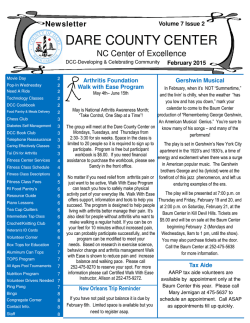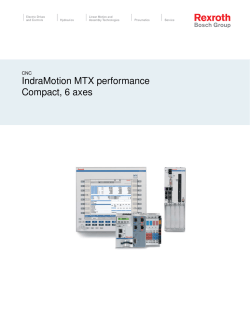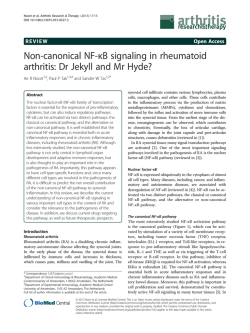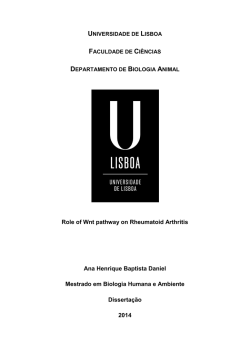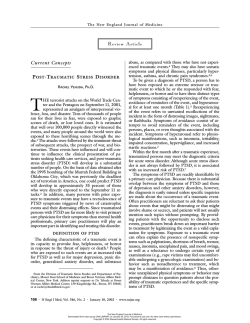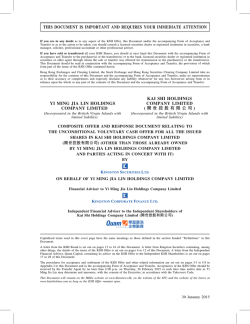
Biologic Therapies for the treatment of Juvenile
Interim Clinical Commissioning Policy Statement: Biologic Therapies for the treatment of Juvenile Idiopathic Arthritis (JIA) January 2015 Reference: NHS ENGLAND E03/PS/a 1 NHS England Clinical Commissioning Policy Statement: Biologic Therapies for the treatment of Juvenile Idiopathic Arthritis First published: January 2015 Prepared by NHS England Clinical Reference Group for Paediatric Medicine Published by NHS England, in electronic format only. 2 POLICY STATEMENT: Policy Ref: Biologic Therapies for the treatment of Juvenile Idiopathic Arthritis NHS England E03/PS/a Juvenile Idiopathic Arthritis (JIA) is the commonest rheumatic disease of childhood. It is characterised by relapsing and remitting episodes of inflammation of the synovial membrane of the joints (synovitis) which, unless treated, leads to damage and deformity of the affected joints and subsequent disability. It has an annual incidence of 1:10,000 children and an overall prevalence in childhood of 1:1000. The term Juvenile refers to the age at onset and historical data suggests that around half of children with JIA continue to have active arthritis as adults (1). Background: • Estimated 12,000,000 children <18yrs in England and Wales • At any one time there are >12,000 children with JIA • Estimated half of these will go on to have arthritis in adulthood • Estimated 1 in 3 will not have arthritis in adulthood but will have sustained permanent damage to one or more joints JIA is not the same as rheumatoid arthritis or other forms of inflammatory arthritis and, although there are similarities with adult forms of arthritis, JIA should be considered separately in both children and adults. JIA is an ‘umbrella’ term which covers a number of different sub-types listed here: • Oligo-articular JIA • Extended Oligo-articular JIA • Poly-Articular JIA (RF –ve) • Poly-Articular JIA (RF +ve) • Systemic-Onset JIA • Psoriatic JIA • Enthesitis-Related Arthritis In addition there are forms of inflammatory arthritis indistinguishable from JIA, but not listed under the umbrella term ‘JIA’. These include: • Arthritis associated with Inflammatory Bowel Diseases 3 (Crohn’s and Ulcerative Colitis), • Arthritis found commonly in Downs Syndrome and other similar chromosome disorders. The treatment of these is effectively identical to that of JIA and should be included accordingly. Drug therapy is dependent upon the number and type of joints involved, as well as the presence of any extra-articular manifestations. The commonest extra-articular complication of JIA is inflammation of the eye (uveitis). Uveitis may predate the onset of arthritis and can be severe even if the degree of arthritis is of a milder course. Unless treated properly uveitis can rapidly cause irreversible damage to the eye leading to permanent blindness. The aim of drug therapy in patients with JIA is to induce and maintain a complete remission of all symptoms, and thus to allow a child to achieve normal growth, development, and allow full participation in school, career, sport and all other aspects of normal life. The initial aim is induction of complete disease remission using corticosteroids – either intravenously or intraarticular. Oral corticosteroids are avoided where possible to avoid side effects (can affect growth or increase risk of osteoporosis) but may be needed for short periods of time. In patients with mild disease limited to <5 joints it may be possible to induce remission which lasts for >6months with intra-articular steroids, particularly if using the long-acting corticosteroid Triamcinolone Hexacetonide. Patients with more severe disease may need intravenous steroids to induce remission, although intra-articular steroids are used in some patients as an alternative. To maintain remission, those patients whose arthritis affects a cumulative total of 5 or more joints, or severely affecting crucial joints such as the spine, ankles, hips, and wrists, should initially be treated with Methotrexate (MTX). This accounts for around half of all children who develop JIA – i.e. around 6000 children in the UK at any one time. Methotrexate has been the first line Disease-Modifying Anti-Rheumatic Drug (DMARD) for the treatment of JIA for over 30 years. Whilst effective in reducing the amount and severity of arthritis it only induces complete remission in 30-50% of patients. Those with JIA arthritis that remains active despite optimal dosing, or who are intolerant of Methotrexate need treating with a ‘Biologic’. The term ‘Biologics’ refers to a range of relatively new treatments which utilise either monoclonal antibodies, or soluble cytokine receptors, to specifically target individual components of the immune system. Currently all of them need to be given either intravenously or subcutaneously. Many are 4 given in co-administration with MTX to optimise their effect. It is estimated that up to a third of all children who start treatment with MTX need to progress to a biologic. Current data from the biologics databases in the UK includes children from all over the UK who are receiving biologics for JIA. According to these databases, 890 children in England alone, are receiving a biologic for JIA; most, but not all, are receiving NICE approved biologics for JIA. Given that registration to the database is recommended but not mandatory, it is likely that this number of 890 is an underestimate. We would suggest 950 children with JIA in England to be currently on a biologic treatment as a pragmatic estimate. The purpose of this interim policy statement is to provide guidance for the use of biologics in patients with JIA until the planned NICE guidance is published. All types of JIA Treatment pathways for JIA are detailed in Appendix A. Initiation of treatment with DMARDs and Biologics should only be undertaken at a specialist centre within a clinical network, and should always involve a consultant paediatric rheumatologist and a paediatric-trained Clinical Nurse Specialist (CNS). MTX is the first-line DMARD for children with JIA. Commissioning position: Biologics should not be used unless a patient has failed optimised treatment with MTX; this is defined as 15mg/m2 given subcutaneously once-weekly for at least 3 months; higher doses have no evidence to suggest increased efficacy (2). For full details see ‘Treatment Failure Definition’ below. The only exceptions to this would be: • The 1st-line use of Anti-TNF in patients with Axial disease or sacroiliitis (as in Appendix A). This is accepted and NICE-approved practice in adults with Spondyloarthropathy (3). • Patients with Systemic-Onset JIA who show signs of Macrophage Activation Syndrome (MAS). This uncommon, but potentially fatal, complication is usually treated with high-dose steroids. Where MAS is severe or steroid resistant, treatment with Anakinra may be lifesaving and should not be delayed (4) The Biologic therapy should be initiated by the consultant paediatric rheumatologist following full discussion with the child, carers, and the specialist multidisciplinary team (MDT). The decision will be based primarily on the JIA subtype and will usually follow the flow diagram in Appendix A. However when 5 choosing between individual Anti-TNF drugs, or between biologics for Systemic-Onset JIA, it may be necessary to consider the mode of administration, required dosing frequency, presence of extra-articular complications such as uveitis, and response to previous medications. All children who commence treatment with a Biologic should be offered the option of enrolling in the appropriate long-term national Registries. These Registries are designed to provide long-term safety data for all these drugs. Clinical Trials It is a fundamental principle that children should have access to participate in clinical trials. The evidence for many of the treatments used in paediatric rheumatology is incomplete and further evidence base to inform clinical practice is needed. • The suggested pathways in appendices A and B should be taken as a guide. Clinical trials may be available in the future, at any of the decision points in those pathways. • Children and young people from all clinical networks in England should be offered the opportunity to participate in any trial for which they are eligible. • Ineligibility or inability to participate in clinical trials must not impede a child’s access to appropriate care along those pathways. • At the end of any trial there should be no delay in deciding appropriate future treatment, if ongoing access to the trial drug is not available a suitable alternative must be offered. Definitions 1. Definition of ‘Response’: Response to therapy should be assessed after 3 months of therapy and re-assessed every 3 months whilst treatment continues. It should document the current status of every synovial joint as either: • Active synovitis • No active synovitis but decreased range of movement • No synovitis and full range of movement In addition the presence of absence of extra-articular complications including Psoriasis, Inflammatory Bowel Disease, Uveitis, Fever, rash, serositis, splenomegaly, or generalized lymphadenopathy attributed to JIA should be noted. 6 2. Definition of ‘clinical inactive disease’ (5) (all must be met) • No joints with active arthritis • No fever, rash, serositis, splenomegaly, or generalized lymphadenopathy attributed to JIA • No active uveitis • ESR or CRP level (both if both tested) within normal limits for the laboratory where tested or, if elevated, not attributable to JIA • Physician’s global assessment of disease activity score as lowest possible on whichever scale is used • Duration of morning stiffness ≤15 min 3. Definition of ‘clinical remission on medication’ (5) Satisfaction of the definition of clinical inactive disease for at least 6 continuous months while on therapy for JIA 4. Definition of ‘clinical remission off medication’ (5) Satisfaction of the definition of clinical inactive disease for at least 12 continuous months while off all therapy for JIA 5. Treatment failure definition: • Persistent synovitis in 2 or more joints • Within 12 months; 2 or more separate episodes of corticosteroid use to control flares of disease • Development/worsening of erosive disease due to ongoing synovitis • Intolerance of therapy – including inability to tolerate the injections • Ongoing evidence of active uveitis, even in the presence of quiescent joint disease. 6. Biologic ‘Switching’ Patients who do not achieve, or who fail to maintain, good control of their disease will need to switch to an alternative ‘Biologic’ from the list above. The decision will be based primarily on the JIA subtype and will usually follow the flow diagram in Appendix A. Evidence to support the sequential use of biologics is based on reported use in international Registries (18); there are no RCTs for sequential use of therapies. Children who fail to achieve good control with 3 or more different ‘Biologics,’ consideration should be given to referral to a specialist centre to discuss the options for Bone-Marrow 7 transplantation or Autologous Stem cell rescue. Effective from: July 2014 Clinical Efficacy and Safety Current ‘Biologics’ and the references detailing their efficacy and safety are listed below: • • • • • Tumour Necrosis Factor (TNF) Inhibitors: Etanercept (6, 7) , Adalimumab (8) (14), Infliximab (9, 15), Golimumab, Certolizumab. (All types of JIA) Interleukin-1 Inhibitors: Anakinra (4,10), Rilonacept (4, 11), Canakinumab (4,12) (Systemic-Onset JIA only) Interleukin-6 Inhibitors: Tocilizumab (4,13, 14, 15) (All types of JIA) T-cell co-stimulation inhibitors: Abatacept (16) (18) (All types of JIA) B-cell inhibitors: Rituximab (17) (Poly-Articular RF+ve JIA only) Poly-articular-course JIA: Evidence summary: High quality randomised, placebo-controlled, double blind trials demonstrate efficacy and safety of Etanercept, Infliximab, Adalimumab, Tocilizumab, and Abatacept. These are summarised in a recent systematic review (18). The review identified seven RCTs , one each for etanercept, infliximab, adalimumab, abatacept, and anakinra, and one each looking at etanercept or infliximab as first-line therapies. It found that there was strong evidence to support the efficacy and safety of biologics over the short-term. Long-term data is available for etanercept, for other treatments it is sparse (18). • There are no data from comparative trials between different agents, therefore the suggested treatment pathway in appendix A is based on the consensus of the British Society for Paediatric and Adolescent Rheumatology Clinical Affairs Committee pending further NICE guidance which is planned. These recommendations are consistent with the recent systematic review (18) Systemic-Onset JIA: • High-quality randomised placebo-controlled, double-blind trials demonstrate efficacy and safety of Tocilizumab, Anakinra, and Canakinumab in Systemic-onset JIA. There is no data from comparative studies, but the use of all these agents is covered in the recent update by the American College of Rheumatology (4) The following biologics are currently licensed and/or NICE 8 approved: In children: • Licensed and/or NICE approved for o JIA: Etanercept and Tocilizumab are licensed and approved by NICE for use in children with JIA; o Poly-articular JIA: Etanercept is approved by NICE o Systemic-Onset JIA: Tocilizumab is approved by NICE for Systemic-Onset JIA • Licensed but not NICE approved foro JIA: Adalimumab, Abatacept, Anakinra and Canakinumab. In adults: • Licensed and NICE approved o Rituximab, Infliximab, Adalimumab, Certolizumab and Abatacept are licensed and NICE-approved in adults with inflammatory arthritis. • Licensed but not NICE approved o Golimumab is licensed but not currently NICEapproved in adults with inflammatory arthritis Equality impact: Responsible Throughout the production of this document, due regard has been given to eliminate discrimination, harassment and victimisation, to advance equality of opportunity, and to foster good relations between people who share a relevant protected characteristic (as cited in under the Equality Act 2010) and those who do not share it. Paediatric Medicine CRG: Mechanism for Funding: Funded in some centres through existing contracts and submitted as part of cost and volume or high cost drugs payments, or through IFRs. The patients on biologic treatments currently (figures from UK registries) suggests 890 children with JIA currently on biologics and not all are NICE approved). Date Approved by Clinical Priorities XXXX Advisory Group 9 Policy review date: During 2016 or sooner once further guidance from NICE is received. References 1. Minden K, et al. J Rheumatol. 2000; 27, 2256–226 2. Ruperto, N. et al. Arthritis Rheum.2004; 50, 2191–2201. A Randomized trial of Parenteral Methotrexate comparing an intermediate dose with a higher dose in children with JIA who failed to respond to standard doses. 3. NICE Technology appraisal 143: Adalimumab, Etanercept and Infliximab for the treatment of Ankylosing Spondylitis 4. Ringold et al. Arthritis Rheum 2013; 65, 2499-2512). 2013 Update of the 2011 ACR recommendations for the treatment of JIA 5. Wallace, C. A. et al. Arthritis Care Res. (Hoboken) 2011; 63, 929–936. ACR provisional criteria for defining clinical inactive disease in select categories of JIA 6. NICE Technology appraisal 35: Etanercept in JIA. 7. Lovell DJ et al, Arthritis Rheum. 2008; 58:1496–1504. Safety and Efficacy of up to 8 years of continuous Etanercept therapy in patients with JIA 8. Lovell DJ, et al N Engl J Med. 2008; 359, 810–820. Adalimumab with or without Methotrexate in JIA 9. Ruperto N, et al. Arthritis Rheum. 2007; 56, 3096–3106. A randomized, placebocontrolled trial of Infliximab plus Methotrexate for the treatment of poly-articular-course JIA 10. Quartier et al Ann Rheum Dis. 2011; 70, 747-754. A multi-centre, randomised, doubleblind, placebo-controlled trial of Anakinra in Systemic JIA 11. Lovell DJ, et al Arthritis Rheum. 2007; 56: S514. Long-term safety and efficacy of Rilonacept in patients with Systemic JIA 12. Ruperto N et al, N Engl J Med 2012; 367, 2396-2406.Two randomised trials of Canakinumab in Systemic JIA 13. NICE Technology Appraisal 238: The efficacy and safety of Tocilizumab in children with active Systemic JIA 14. Yokota S, et al. Lancet. 2008;371:998–1006. Efficacy and Safety of Tocilizumab in patients with Systemic JIA – A randomised, double-blind, placebo-controlled trial. 15. Brunner et al. 2012; ACR abstracts, 64, 1597. Efficacy and saftery of Tocilizumab on patients with poly-articular-course JIA: data from a phase 3 trial 16. Ruperto N, et al Lancet. 2008; 372, 383–391 Abatacept in children with JIA – a randomised, double-blind, placebo-controlled withdrawal trial 17. Cohen SB, et al. Arthritis Rheum. 2006;54:2793–2806. Rituximab for Rheumatoid Arthritis refractory to Anti-TNF: results of a randomized placebo-controlled double blind trial. 18. Ungar W, et al. Sem Arth Rheum 2013;42:597-618. The use of biologic response modifiers in polyarticular course juvenile idiopathic arthriits: a systematic review. 10 Version Control Sheet Version Section/Para/Appendix Version/Description of Amendments Date Author/Amended by 1 New template for version 21012014 Cut and pasted into new template 21/03/14 J Kemp 2 3 4 5 6 7 8 9 10 11 Appendix A: Suggested Treatment Flow-chart for JIA Oligo-Articular JIA: All Patients should receive intra-articular steroids to all affected joints. Re-assess 3-6 monthly and re-inject as needed. If extension of arthritis to >4 joints, more than 2 injections within 12 months, or evidence of severe/erosive disease in any joint start ‘Other JIA’ Pathway Yes Other JIA: At diagnosis all patients should receive either intra-articular steroids to all affected joints, or systemic (preferably IV) corticosteroids. All patients should then start treatment with a DMARD or biologic and be re-assessed every 3/12. ‘Flares’ of arthritis should be treated with steroids as above, but if >3 joints are affected, or the patient is intolerant of the treatment, they should proceed to the next step of the pathway. Consider access to research studies at all treatment decision points No Is sacroiliitis or axial arthritis present? Start weekly Methotrexate. s/cMTX should be used before proceeding further on pathway Yes Start IV Tocilizumab or s/c Anakinra Does the patient have Systemic-Onset JIA? No Start Anti-TNF. If on MTX, but intolerant, stop MTX. If tolerating, but poor response add anti-TNF to MTX. Are there ongoing active systemic symptoms? Switch to alternative Anti-TNF No Yes No Does the patient have Macrophage Activation Syndrome unresponsive to IV steroids? Start s/c Anakinra Yes No Switch from Tocilizumab to Anakinra or Vice Versa Is the patient RF+ve? Switch to Abatacept or Tocilizumab. Yes Switch to IV Rituximab Switch Abatacept to Tocilizumab (or Vice Versa) If 3 different classes of Biologic have failed, refer for consideration of Autologous / Allogeneic Bone-Marrow transplant Co-administration of Biologics is not currently recommended. It is therefore recommended that after stopping any biologic therapy the equivalent of 2 doses of the drug stopped should 12be missed before starting the new 13
© Copyright 2026


